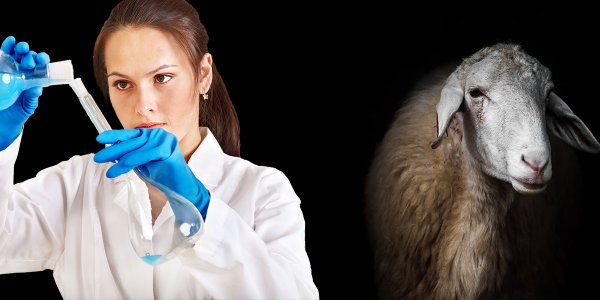Scientists Are Growing Sheep Embryos Containing Human Cells
Tags: News

In 2017, a team of scientists made a controversial breakthrough, they experimented with pig embryos and injected it with human cells. The embryos were not allowed to develop past 28 days of age but it did move scientists one step closer to growing human organs for medical transplants. Today, a team of scientists from Stanford University have chosen to merge human stem cells with sheep embryos. The research hasn’t officially been published, but the experiment was announced at the 2018 American Association for the Advancement of Science annual meeting which took place over the weekend. The scientists chose sheep because the animal’s organs – specifically the heart and lungs – are similar to ours. It’s important to note that the contribution of human cells is very small. “About one in 10,000 cells in these sheep embryos are human,” said Dr Pablo Ross from the University of California, Davis, who is part of the team working towards growing human organs in other species. “For a pig we typically transfer 50 embryos to one recipient,” he said. “With the sheep we transfer four embryos to one recipient.”
As it stands, the team are only allowed to let the embryos develop for 28 days, however, Dr Hiro Nakauchi of Stanford University, who is part of the team, said a longer experiment, perhaps up to 70 days, could garner better results. Of course, there are some ethical concerns, which Ross also echoed. “If our results indicate that the human cells all go to the brain of the animal, then we may never carry this forward,” he said. However, he also agreed that, “all of these approaches are controversial, and none of them are perfect, but they offer hope to people who are dying on a daily basis.”
“Even today the best matched organs, except if they come from identical twins, don’t last very long because with time the immune system continuously is attacking them,” Ross says. “We need to explore all possible alternatives to provide organs to ailing people.”
“Of course, the ultimate goal of chimeric research is to learn whether we can use stem-cell and gene-editing technologies to generate genetically-matched human tissues and organs, and we are very optimistic that continued work will lead to eventual success,” said Salk Professor Juan Carlos Izpisua Belmonte”
Image Credit1: pojvistaimage / 123RF Stock Photo
Image Credit2: Pixabay
Leave Comment: